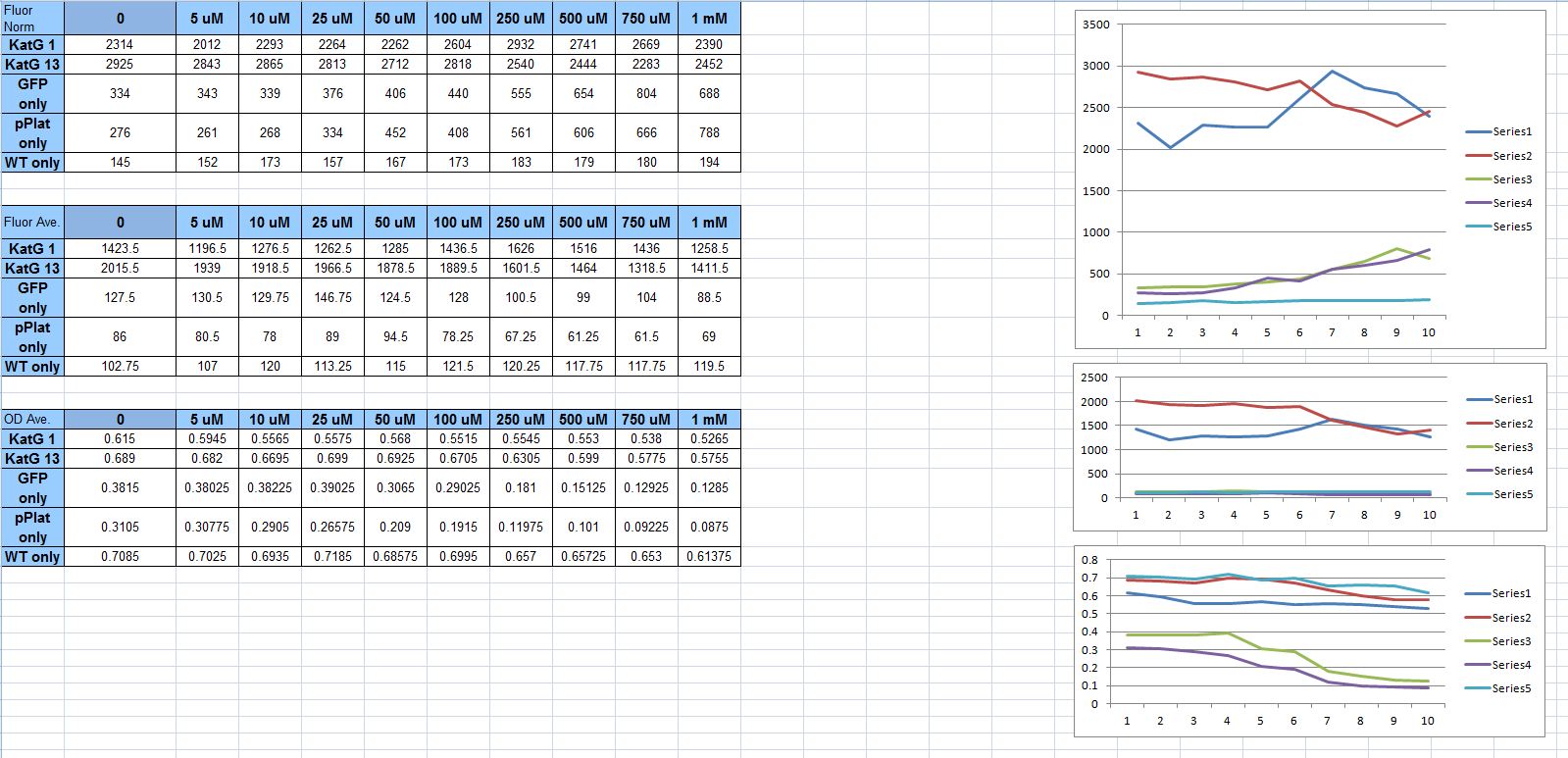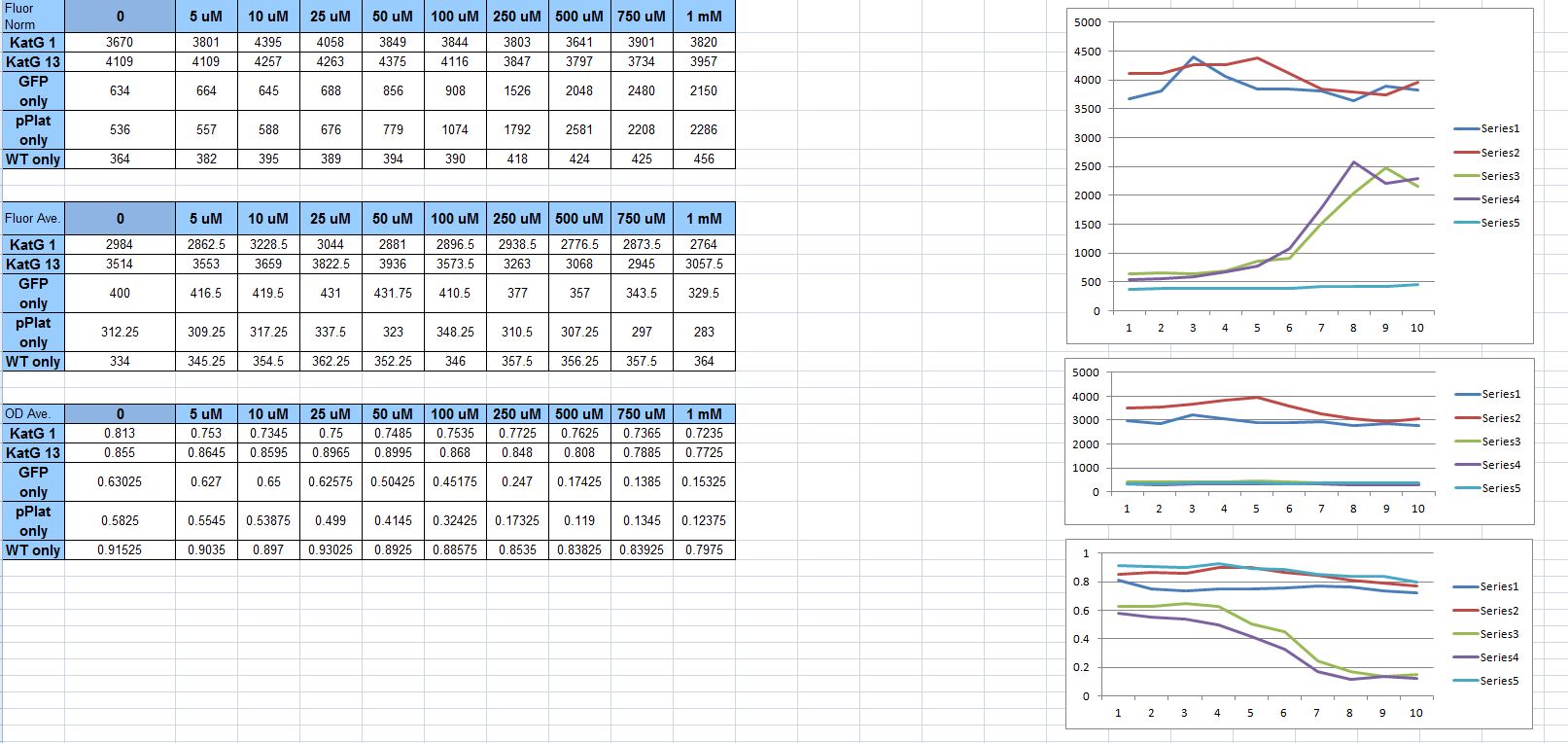Team:BYU Provo/Results
From 2011.igem.org

|
Results
Thermosensor Results The following table summarizes the results of the random mutagenesis on the Lysteria thermosensor. We found two thermosensors with narrower temperature ranges, and four thermosensors with increased or decreased expression after melting. We are especially pleased with the narrowed temperature ranges of BBa_K619890 and BBa_K619891, which demonstrate the most narrow temperature sensitivity of any known riboswitches from our literature research.
| Part Number | Melting Range |
|---|---|
| [http://partsregistry.org/wiki/index.php?title=Part:BBa_K619889 BBa_K619889] | 30'C - 37'C |
| [http://partsregistry.org/wiki/index.php?title=Part:BBa_K619890 BBa_K619890] | 35'C - 37'C |
| [http://partsregistry.org/wiki/index.php?title=Part:BBa_K619891 BBa_K619891] | 30'C - 35'C |
| [http://partsregistry.org/wiki/index.php?title=Part:BBa_K619892 BBa_K619892] | 30'C - 37'C |
| [http://partsregistry.org/wiki/index.php?title=Part:BBa_K619893 BBa_K619893] | 30'C - 37'C |
| [http://partsregistry.org/wiki/index.php?title=Part:BBa_K619894 BBa_K619894] | 30'C - 37'C |
| [http://partsregistry.org/wiki/index.php?title=Part:BBa_K619895 BBa_K619895] | 30'C - 37'C |
| [http://partsregistry.org/wiki/index.php?title=Part:BBa_K619897 BBa_K619897] | Positive Control |
| [http://partsregistry.org/wiki/index.php?title=Part:BBa_K619898 BBa_K619898] | Positive Control |
OxyR Promoter Results Our OxyR results were inconclusive. Despite documentation in the literature about the reactive oxygen species (ROS)-inducible promoters katG, hemH and soxS, we were unable to produce consistent results demonstrating their usefulness as ROS sensors. The results of our final assay can be seen in the graphs below:
3 hour readings
5 hour readings
The graphs represent (from bottom to top) the OD, the raw fluorescence, and the normalized fluorescence (fluorescence/OD). The clustered lines on the bottom of the graphs are the negative controls (empty plasmid, promoter-less GFP) and a positive control for fluorescence. The top lines are the final versions of our katG promoters controlling GFP expression. The horizontal axis is ROS concentration, which increases from left to right.
As can be seen, there is no significant increase in fluorescence with increased ROS concentration. In the future, we hope to improve our assay in order to create a working ROS sensor.
Overall Results The AND gate function was very successful when using pBAD in place of the OxyR-inducible promoters. pBAD worked as an "arabinose sensor" which demonstrated proof of concept. We were very pleased with the range of thermosensors we produced. The variety offers flexibility to future users.
 "
"

